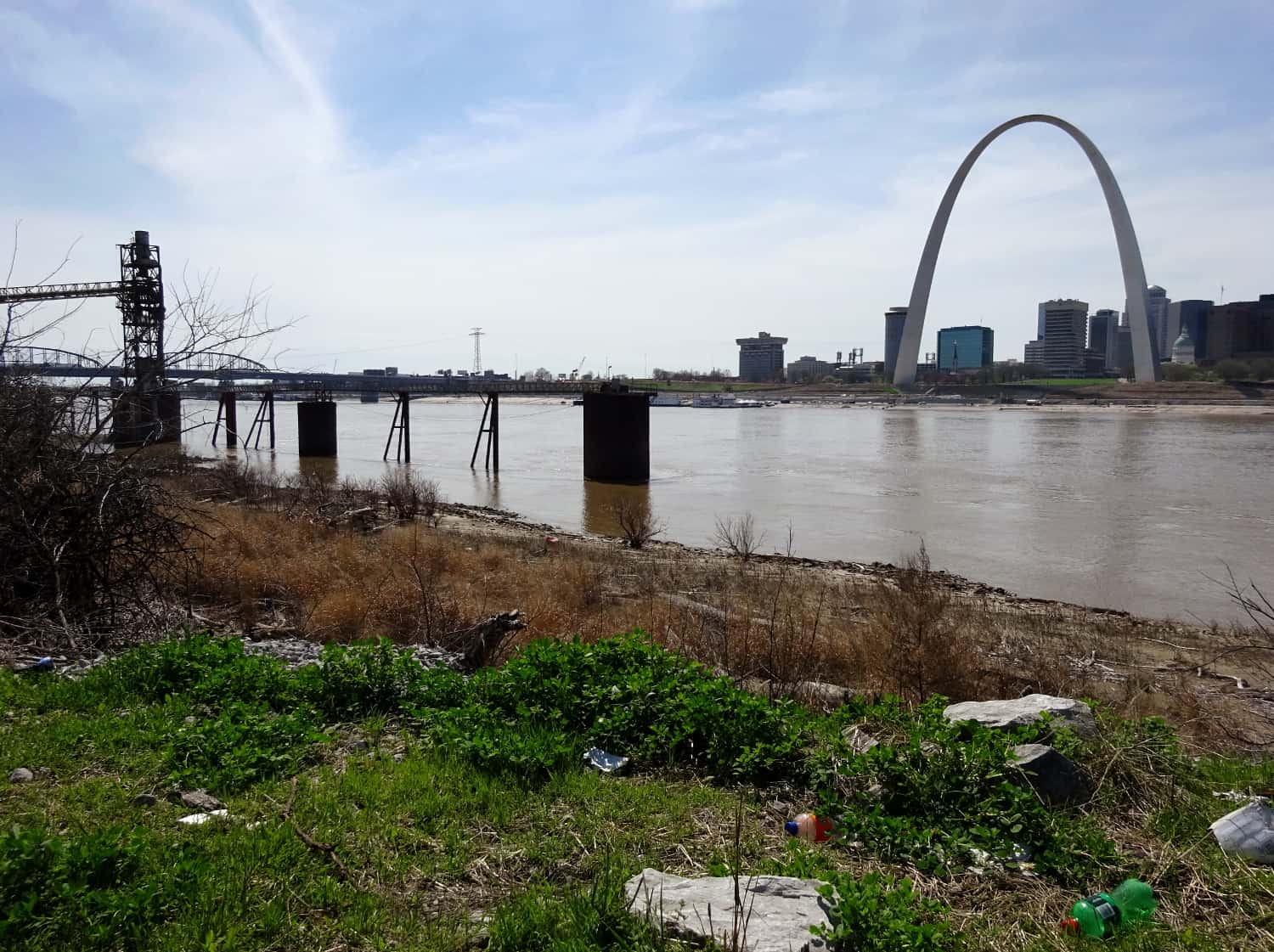In 1917, perhaps the worst race riot in American history was unleashed in East St. Louis. Through acts of mob violence and terrorism, up to 400 Black people were estimated to have been murdered and thousands were left homeless after their houses were destroyed. Today, the city of East St. Louis still struggles to recover and rebuild itself in the context of newer forms of racialized depression.
On Monday, Sandra Pfeifer, an award-winning documentary filmmaker, and Father Joseph Brown, a Jesuit and East St. Louis native, were at Loyola University of Chicago for documentary screenings and a discussion on the riots, its significance for our country today, and its deeper meanings and implications. TJP had the chance to interview them.
TJP: What was the inspiration for making your documentary “Against All the Odds“ on East St. Louis? What moved you about the process?
Pfeifer: For me, it began as just a progressive notion to shed light on a subject that was important and underserved. But ultimately, the whole project took on a life of its own, it guided me and gave meaning way beyond what I had imagined. I was given an opportunity, a gift; a calling and I answered. I am its humble servant.
TJP: How does a city survive 100 years of what you call “post-traumatic stress”?
Brown: By dressing our world and ourselves with elegance.
By teaching every child as if that girl, that boy, can someday advance medicine, negotiate treaties, make words slap the ears and the hearts with intensity and truth. By telling the world that, yes, we were there; yes, when we even tiptoe near the story of that awful time in July, it causes us to tremble, tremble; tremble.1”
By preaching – sometimes, even, by words – and reminding one another and total strangers that “We are here not to be the failures that everybody expects, but to be the harvest that everybody needs.”
TJP: What are some parallels between East St. Louis in 1917 and America today?
Brown: For at least an entire year back then, the unrest in East St. Louis simmered, bubbled and flared up, repeatedly. From the meat-packing plant workers in 1916, to the laborers at the Aluminum Ore Company in the late spring and early summer of 1917, the elements were being assembled.2
The factors affecting what would be called the “Race Riot of 1917” (but that more accurately could be called “Pogrom”) seem frighteningly familiar to us, today. Fear of gun-carrying “interlopers”; accusations of waves of “scab” laborers and an influx of “colonized” Black voters to rig elections in favor of Republicans.3
Hysteria was ramped up and so white citizens stocked up on firearms. Politicians engineered more and more restrictive and intrusive schemes to limit the ability of African Americans to vote in local elections. Trains were met by mobs. Black workers were taunted as they entered and left the workplace. Any suspicion was elevated to fact. Every doubt was transformed into certainty: the city must remain white and the Negroes must be forced to leave.
TJP: What are the implications of the 1917 riots for Americans today? How is our country’s modern racial climate related to the riots?
Pfeifer: How isn’t it? That may sound snarky, but really it is just fact and reality. Racism exists in America, it did then and it does now. It rears its ugly head over and over again with these major happenings, but in fact continues on a daily basis in ways that White America chooses to ignore. Because we have never really acknowledged the truth in the right way, so it goes in a vicious cycle over and over again.
The act of atonement is key to overcoming transgressions, especially those that involve human suffering and unjust treatment, it is something we have never done. Not atoning for slavery was our first big mistake and it progressed from there. The pain it has caused Black Americans doesn’t end there, it hurts all of us, as a nation, and as a people.
It is noted that America doesn’t do shame very well. Now we must go back, learn our history, all of it, good, bad and ugly. Atone, accept and acknowledge, before we can really face a global world intact and united.
TJP: Speaking of history, what’s one take-away you hope people will have from this history?
Pfeifer: That our real history is important to learn and that it is never too late not only to learn it, but to accept it and by knowing it things can change. Once you know something you can’t unknow it and you have a responsibility to it.
TJP: There have been questions about the need or role of the 2017 Commemoration. “Will it heal adequately and appropriately?,” “Will it be a turning point for East St. Louis?,” “Will it serve to further divide?,” etc. What is the point of these commemorations?
Brown: In a 2014 Sunday New York Times Magazine article, there are two stories that attach to these questions. One, a photo essay about reconciliation in Rwanda is compelling and humbling. Some of the perpetrators of the violence sought out some of their direct victims and asked for pardon. Both perpetrator and victim are pictured, close to each other; looking at the camera, formally posed, they ask the viewer: “Can you step where we stand?”
That will be a question for all those whose souls still “tremble” when they realize that parts of them are “still there” where ancestors were crucified and where ancestors carried out the killing.
Another Times article reports on the Mississippi Civil Rights Museum, which opened in 2017, and which has already done much collecting of artifacts and spirit-filled texts concerning the bloody history of that state, of those people. The Museum is under the control of the State of Mississippi and many of the survivors and relatives of those who perished are of mixed minds about the eventual story that will be told, and about who will control the telling.
But they, too – like the men and women of Rwanda who have walked to the place of forgiveness – say that they cannot live – perpetrator and victim, both – unless the truly liberating story is told. And then, just maybe, the song will heal us all.
TJP: You both have worked hard on getting the story of East St. Louis, past and present, out there today. Can you talk a little about the process of 1917 Centennial?
Brown: At an early planning meeting, we gathered in the conference room, we were hoping for someone to transform our fragmented and tightly squeezed dreams into a “full meal.”
[We remembered] the Mass graves. Ida B. Wells. Du Bois. Garvey. Daisy Westbrook. Survivors with burn scars and amputations. News accounts leveling the blame squarely on the perpetrators.
[There was] the woman who refuses to let all our journeys from “can’t to can” be forgotten … The man who led the rescue of the books, the papers, the memories of our childhood learning, wheeled into the circle to remind us that the past is never past. The veteran teacher who still reads something new every day and challenges all of us to speak and teach and write with the eloquence which is our communal charge… there was the no-longer little boy who heard his old folks say, often, “Yes. It was terrible. We hid people under our porch.” His haunting also needed to be freed, released.
Those gathered in the room knew that finally, if the city were to be honored for surviving relentless efforts of social, political and economic eradication, there had to be a healing of the land and a healing of the memories.
We had the mayor, two ministers and several legendary teachers on site and in sight. Several times, the recognition moment occurred. Yes. That is exactly what “I/We” have been saying for 5, 10, 20 years.
No one disappears as long as their prayers linger in our souls.
***
Below is a video about the 1917 East Saint Louis Riots:
***
Image courtesy FlickrCC user Craig Dietrich.
- From the Black spiritual, “Were You There (When They Crucified My Lord?) ↩
- Starting in 1915, the “Great Migration” brought millions of Southern Black Americans seeking a better life and jobs to northern cities. Industry leaders often used cheaper Black labor to replace white workers and the population shift began sparking tensions, violence, and sometimes large-scale riots along racial lines. ↩
- The political party favored by many African Americans of that era. ↩


